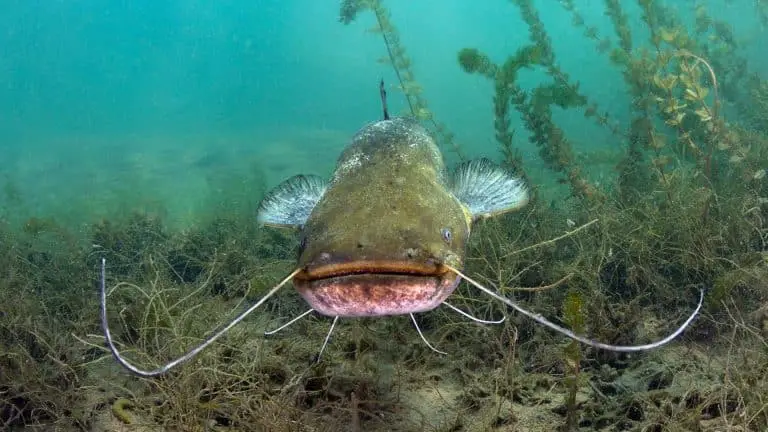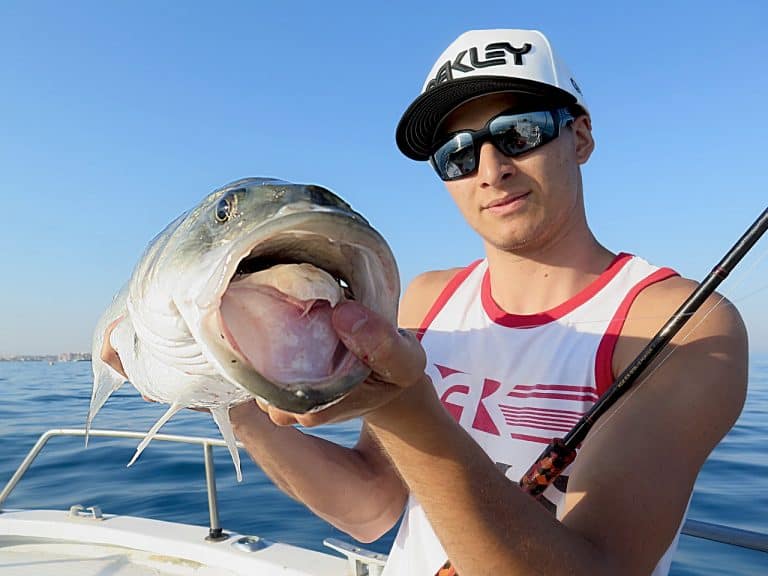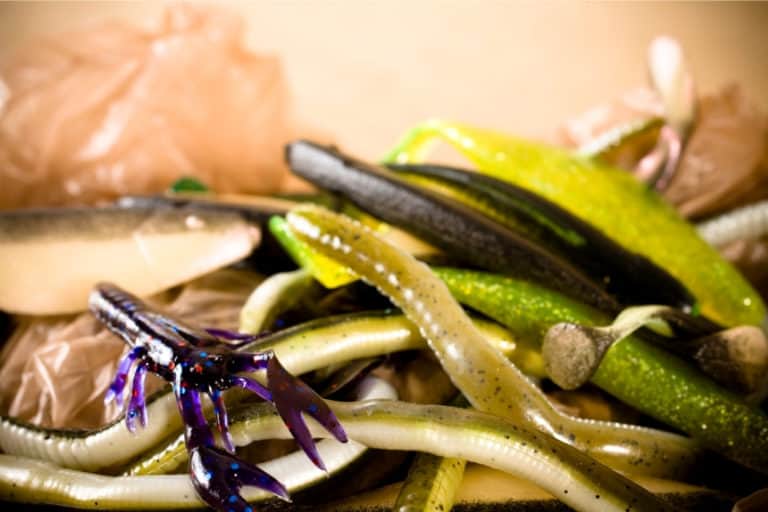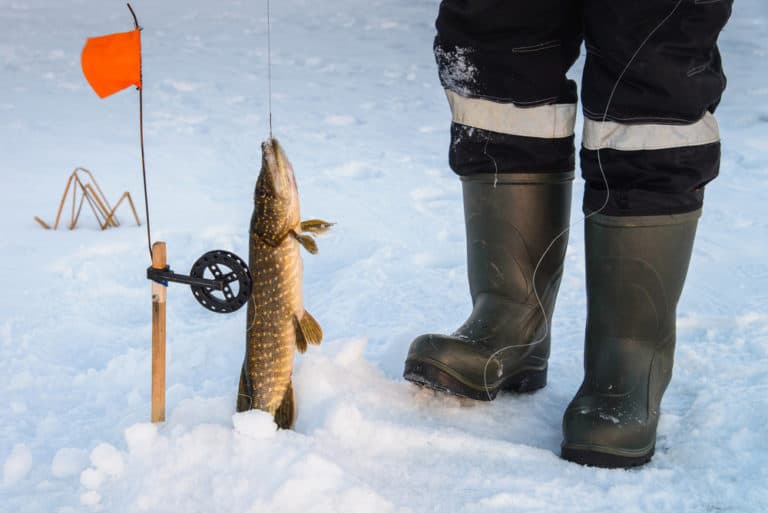How To Fish A Chatterbait For Bass
In today’s day and age, there are so many styles and techniques of fishing. There is jigging, ripping lipless crankbaits, deadsticking, twitching jerkbaits, and so many other presentations. Today we are going to explore how to fish a chatterbait for bass.
Knowing them all is a daunting task, so today, we will break down one of the most underrated bass fishing presentations.
Chatterbaits are incredible lures that can completely turn fishing trips around when used correctly. Today, we will break down the history of chatterbaits, where they are best used, and how to use them.
The Chatterbait’s backstory
It was 2004 when the first Chatterbait entered the market. According to Bassmaster, Ron Davis and his father developed a bladed jig that would chatter in the water on retrieval. Just an idea and a prototype launched this mega bait into the world.
Once professionals started using and promoting the lure, the idea took off. As huge orders rolled in, the Davis family could not keep up with the demand.
This is when the Z-Man lure company swooped in and helped out. Ever since then, Z-Man has been known as the original Chatterbait brand.
What is the Chatterbait?
In its simplest form, the Chatterbait is a jig with a blade on top. If you take away the patented blade, it looks like any other bass fishing jig. However, the complete design is what makes the Chatterbait so special.
The blade on top is the connection point between your line and the rest of the jig. When retrieving the lure back in, there are a couple of jobs being done.
Firstly, it chatters, hence the name. The blade cuts into the water causing a vibration that entices the fish.
The other job being done is a physical flash that the fish can see. This helps imitate a baitfish flashing through the water column. These are both aspects that are vacant on a regular jig.
It is very common to add a trailer to the Chatterbait to provide even more action. Some popular trailers include:
- swim baits
- Chunks
- Craws
- Short plastic worms
They also come in a number colors and size variations. Some really popular colors include black and blue, all white, chartreuse, and many more.
A best practice is to match your trailer color to fit the skirt so it all works together well.
How to use Chatterbaits
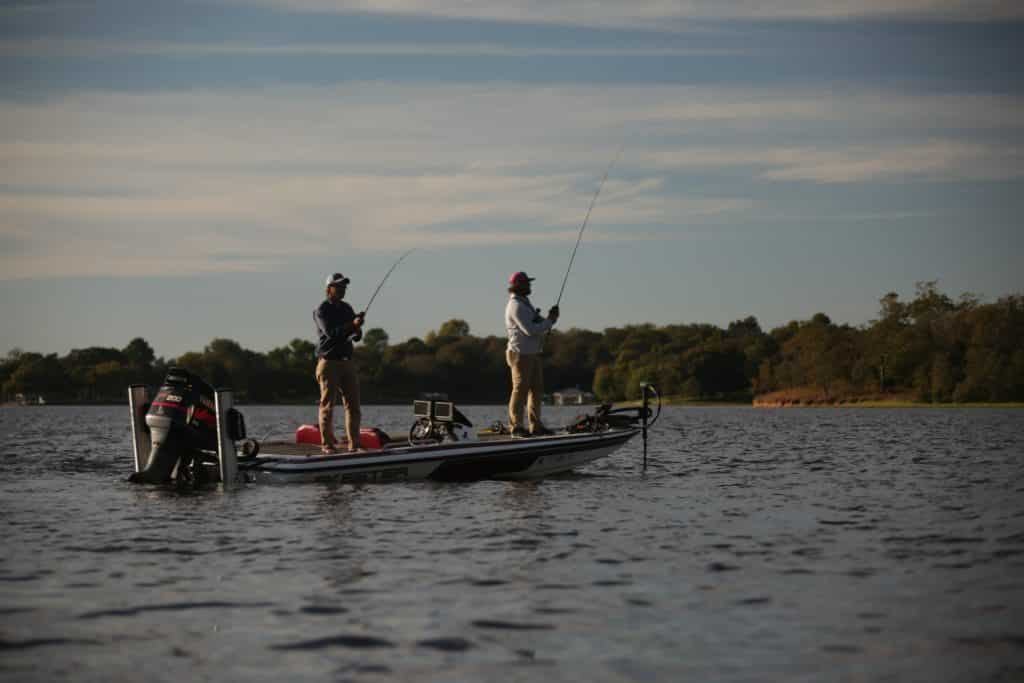
Now that you know the lure’s backstory and what exactly they are, it is time to actually use it.
Without the knowledge of how to use the Chatterbait, it just becomes a display piece that can sit on a shelf but not in your tackle backpack.
There are a few ways that you can use the Chatterbait. One of the anglers’ favorites is the slow roll.
Slow rolling the lure by a structure and over ledges can provide huge results. All you do is throw it out there and slowly retrieve it back in. This allows the bait to stay deep and entice wandering fish.
Another popular presentation is burning or ripping the lure. Burning is the opposite of a slow roll, instead of slowly reeling your line back in, you rapidly reel to imitate a fast moving bait fish.
Ripping is when you use a fast flick of your wrist and fishing rod to create an action that rapidly pulls the chatterbait through the water, this also helps to imitate a bait fish.
You can combine ripping and burning to create a sporadic action similar to finicky fish that are just looking for a reaction bite.
Where and when to go chatterbait fishing
There are so many places that a Chatterbait can be used which is why it is a fantastic, versatile lure.
However, they may not be the best option for every situation. Knowing where and when they should be used is key.
To start, we will talk about the times of the year where Chatterbaits can be super effective.
As you know, the timeline of bass fishing works from the early spring all through the year and into the winter months.
Each moment throughout the year harbors differing results because of various factors.
Chatterbaits are excellent in the pre-spawn because it helps target large female bass before they find their beds.
Since this can be a mainly moving bait, you can cover a lot of water at once in search of the big ones. This same reasoning applies to the post-spawn and fall seasons.
Throughout the spawn and summer seasons, you will mainly be using the Chatterbait as a searching bait around beds and grassy areas.
These do not make great bed fishing baits, so stick to the classics for that.
With a basic idea as to when chatterbaits are best, seeking out the perfect target zones is the next step.
You also need to know where in the body of water Chatterbaits are best.
Like most presentations, this one does really well on the edges of weed beds and grass patches. The vibration and action are just enough to draw those fish out to strike.
Also, rolling the Chatterbait over ledges and through the structures are great. This is because you will cause some reaction bites in areas that bass are known to live in.
One of the most underrated uses of the Chatterbait is by docks and other big structural points.
A lot of people flip structure with flipping jigs and other presentations, not the Chatterbait.
Using a bladed jig to do the same thing adds the perfect touch of flair, both in the vibration and the flash from the blade.
How to fish a chatterbait: Final Thoughts
Everyone’s fishing progression is different. Early on, every angler finds a bit of success in a presentation or two. Then, those few presentations are all that they use because that is their comfort zone.
There comes a time where the bites start to dry up and you have to adjust. Using a Chatterbait is perfect for those situations and chatterbait fishing allows you to cover a lot of ground and move onto your next spot if you are having no luck.
So, the next time that you feel like your fishing needs to be shaken up, look to a Chatterbait and see if it fits your fishing style!
Recent Fishing Posts:



